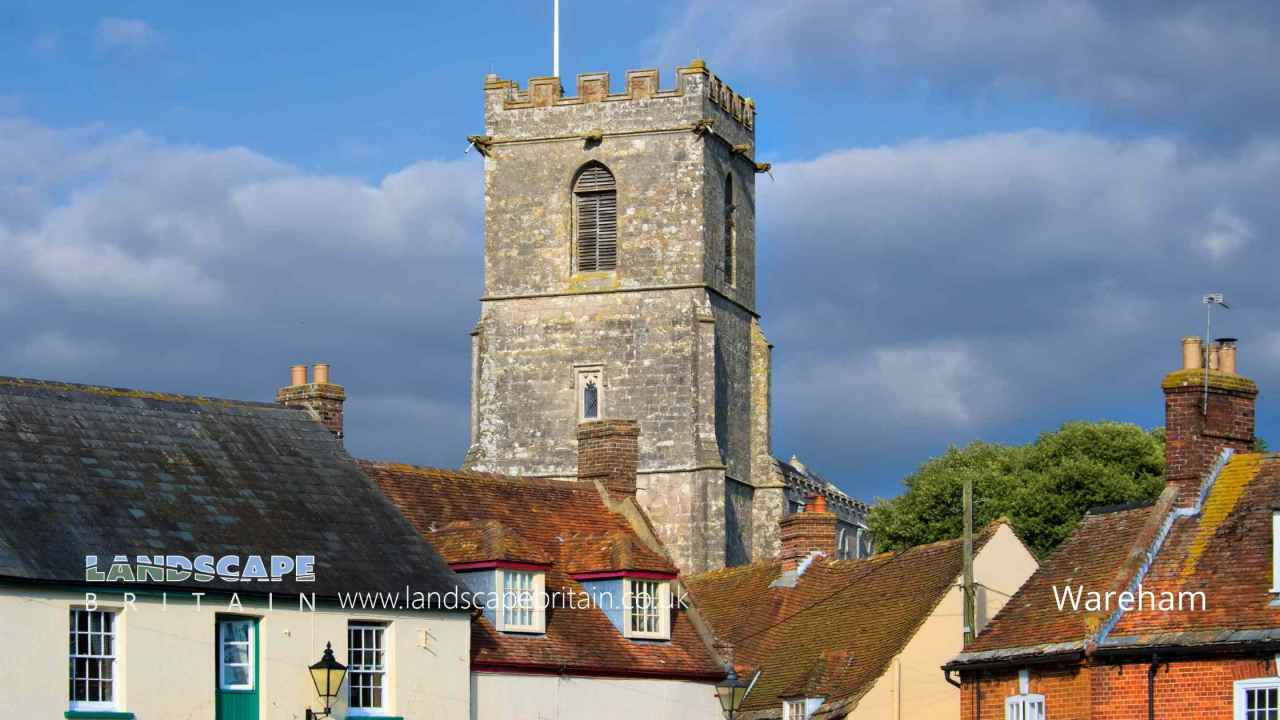Wareham is a Town in the county of Dorset.
The historic market town of Wareham in Dorset is located on the River Frome and is well known for its Saxon walls which date back to the 9th century. The town has a number of interesting shops and cafes as well as a weekly market. Wareham is also home to several museums including the Dorset County Museum and the Purbeck Mineral and Mining Museum.
The town of Wareham is located in the county of Dorset in England. It is situated on the River Frome and is approximately 8 miles (13 km) from the coast. The town has a population of around 9,000 people.
The history of Wareham goes back to the Saxon period when it was founded by Alfred the Great in 876 AD. The town was originally called Weohham and was located on the site of an existing Roman settlement. The town grew in importance during the medieval period and was defended against attack by a set of walls which were built in the 9th century.
During the English Civil War, Wareham was occupied by Parliamentary forces. In 1644, a Royalist army attempted to retake the town but was defeated at the Battle of Lostwithiel.
The town continued to grow throughout the 18th and 19th centuries and became a centre for market gardening and agriculture. Today, Wareham is a popular tourist destination and is home to several museums including the Dorset County Museum and the Purbeck Mineral and Mining Museum.
If you are visiting England, then make sure you include a trip to the historic town of Wareham in your itinerary. You will not be disappointed!
Wareham postcode: BH20 4HU
There are great places to visit near Wareham including some great towns, waterfalls, villages, historic buildings, historic monuments, ancient sites, hills, castles, ruins and airports.
The area around Wareham boasts some of the best towns including Lyme Regis, Charmouth, Weymouth, Bridport, Beaminster, and Wareham.
Waterfalls to visit near Wareham include Jericho Weir.
Uplyme, Bincombe, and Symondsbury are some of Wareham best villages to visit near Wareham.
There are a number of historic buildings near to Wareham including The Cobb.
King's Statue (King George III Statue) is one of Wareham's best, nearby historic monuments to visit in Wareham.
There are a several good ancient sites in the area around Wareham like Eggardon Hill.
The area close to Wareham boasts some of the best hills including Eggardon Hill.
Corfe Castle is a great place to visit close to Wareham if you like castles.
The area close to Wareham boasts some of the best ruins including Corfe Castle.
Bournemouth Airport is one of Wareham's best, nearby airports to visit in Wareham.
Wareham History
There are some historic monuments around Wareham:
Places to see near Wareham
History of Wareham
The town’s oldest features are the town walls, ancient earth ramparts surrounding the town, likely built by Alfred the Great in the 9th century to defend the town from the Danes as part of his system of burh towns. The Danes invaded and occupied Wareham in 876, and only left after Alfred returned with an army and made a payment of Danegeld. In 998 they attacked again, and in 1015 an invasion led by King Canute left the town in ruins. The town was a Saxon royal burial place, notably that of King Beorhtric (d. 802). Also in the town at the ancient minster church of Lady St. Mary is the coffin said to be that of Edward the Martyr, dating from 978. His remains had been hastily buried there and were later taken from Wareham to Shaftesbury Abbey in north Dorset (and now lie in Brookwood Cemetery, Surrey). By the end of the Saxon period, Wareham had become one of the most important towns in the county, to the extent that it housed two mints for the issue of Royal money. The Burghal Hidage lists the town as 1,600 hides, the third largest in the realm. After the conquest of England, the Normans built a castle on the banks of the River Frome, at the site now known as Castle Close. The castle was the focus of much fighting between the forces of Stephen and Matilda during the period of civil war in the mid 12th century. The keep was destroyed at an unknown date in the 12th or 13th century, possibly under the terms of the Treaty of Wallingford, and no visible trace remains. Up until this time Wareham had been an important port; however the growth of Poole and the gradual silting of the river caused a decline in trade and by the end of the 13th century most of the foreign trade had transferred to Poole. Local trade continued to be handled at the Quay until the construction of the railway in the 19th century. During the English Civil War, Wareham changed hands several times between the Royalists and Parliamentarians and in August 1644 was the site of a fierce battle with 2,000 Cromwellian soldiers besieging the town.



















